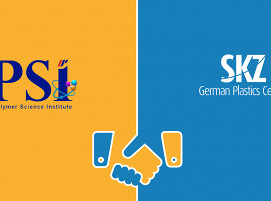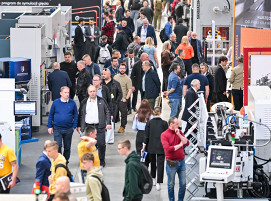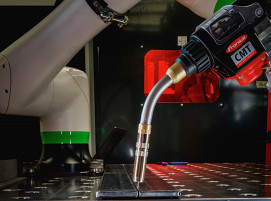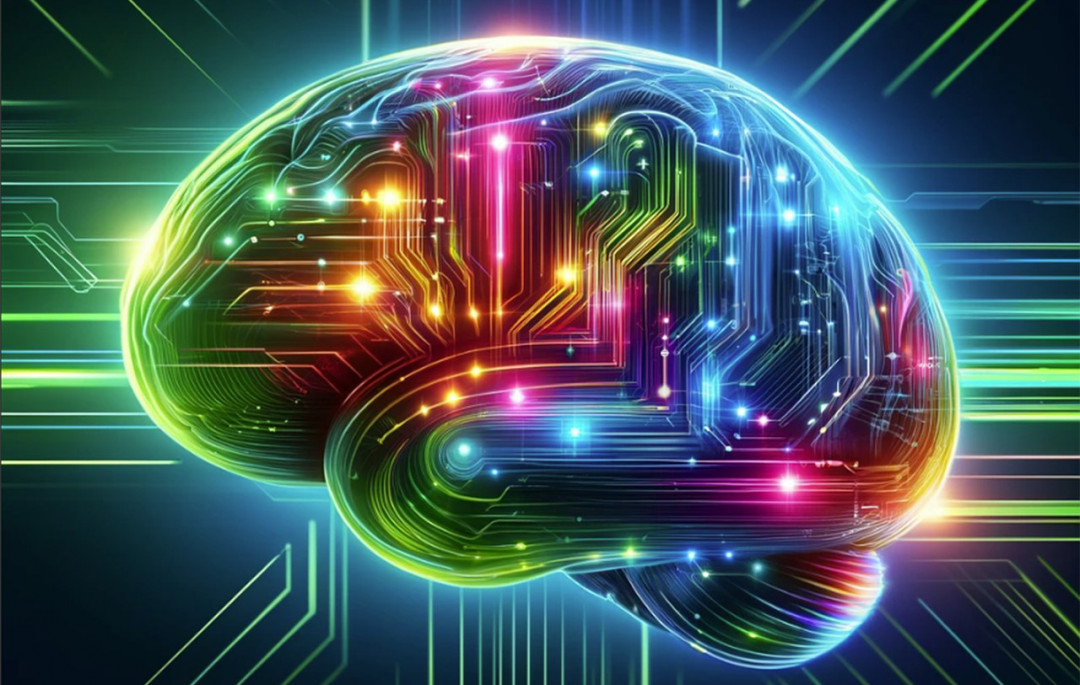
With artificial intelligence (AI), lasers now cut and weld with unparalleled precision. Machines can sort sheet-metal parts flawlessly and customers can optimize efficiency without the need for complex programming. That’s why AI has established itself as a cornerstone of Trumpf ’s business, enhancing everything from training programs to machine tools and laser technology.
The advanced VisionLine Detect image processing tool harnesses AI to pinpoint the exact spots for laser welding – a task that once required extensive programming expertise and operator experience. The process is now simple: users upload a few images to the EasyModel AI cloud application and mark weld points on the parts with a click of the mouse. EasyModel AI then generates an model, which trains itself and enables VisionLine Detect to identify welding points automatically. I will then continue to position the laser with speed and accuracy.
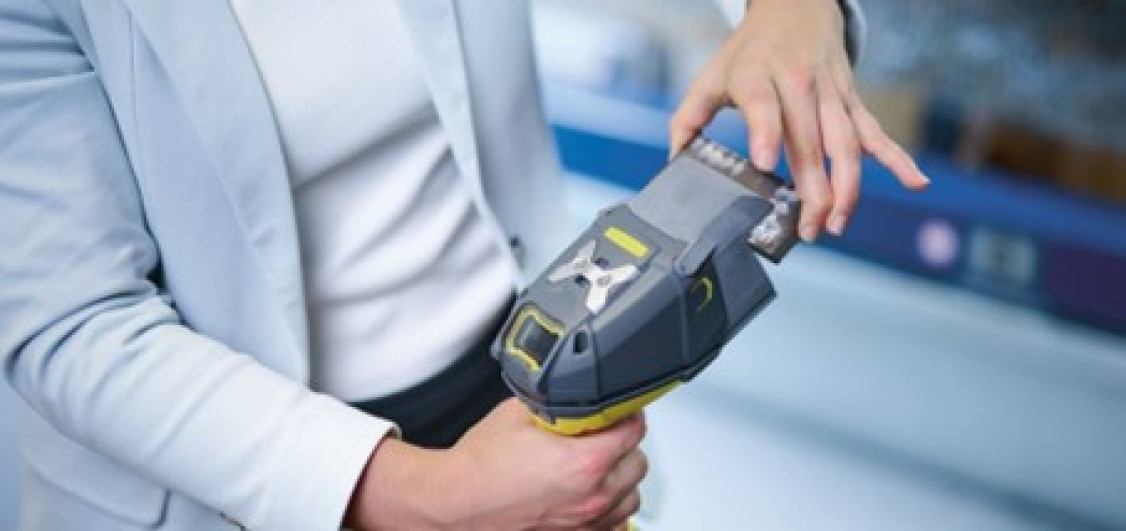
Overcoming skepticism about AI
Many customers express concerns about introducing AI onto their shop floors. However, these doubts often dissipate once they witness AI in action during day-to-day operations. One example is the EasyModel AI cloud application, which uses advanced image recognition to identify parts during laser welding. This solution stabilizes production processes and offers benefits particularly in high-volume manufacturing environments like the automotive industry. In the best-case scenario, it increases the volume of produced parts while maintaining data protection standards.
Traditional image recognition systems without AI often struggle with complex geometries, very small parts and highly reflective materials. These challenges are especially pronounced in tasks like welding battery cells, delicate electronic components and round reflective cables that require extreme precision. In such scenarios, a laser might perform thousands of welds in a matter of seconds. A single misidentification by a conventional system could have serious consequences – even a minor inaccuracy could render an entire car battery unusable, increasing waste and driving up costs. The AI model developed by EasyModel AI for VisionLine Detect is a valuable tool for meeting this challenge.
No AI expertise required
The product manager at Trumpf, Florian Kiefer has spent the past three years leading the development of EasyModel AI. After extensive conversations with customers and in-depth market analysis, he identified the need for a simple, cloud-based solution. The result is EasyModel AI – a tool that requires no prior AI expertise. All users need are high-quality images of their parts. The images are uploaded to the application and – using an intuitive, Microsoft Paint-style tool – the welding positions are marked. From there, the AI takes over, training itself with the provided data. Initially, users manually mark weld points on just a few images. Based on this input, the model begins generating its own suggestions for weld positions. Users can then evaluate and adjust these suggestions as necessary. After training on just 10 to 50 images, EasyModel AI creates a reliable AI model – a process that typically takes only minutes and, at most, a few hours. Once the model is complete, it can be downloaded and incorporated it into the VisionLine Detect image processing software. This software ensures precise and consistent part recognition, enabling the laser welding system to consistently apply each weld in exactly the right place.
Data
“From the moment data is generated, we need people who can identify which data is relevant for the company and for the production process,” says Jens Ottnad. This is one of the key reasons he took on the role of head of global training at Trumpf: to equip young employees with these critical skills. “Quite simply, this is the biggest transformation we face – and that’s why it’s so important for as many people as possible to understand the basics of how AI works.”
Cut edges
While tiny cables present a challenge in laser welding, optimizing cut edges poses similar difficulties in laser cutting. “Our customers demand the highest possible part quality, including exact and precise cut edges,” explains Louisa Peters, a TruLaser product manager in Trumpf's Machine Tool division. Peters has spent three years improving the edge quality of sheet metal parts. “It can be really challenging when you’re faced with materials or sur faces that aren’t optimized for laser cutting, especially if you have limited experience,” she says. In such cases, operators from sheet metal processing companies often have to manually adjust cutting parameters one by one to achieve the desired result. This involves selecting the cutting process, testing it on parts and then subjectively evaluating the edge quality. If the results fall short, they must tweak individual parameters repeatedly – a time-consuming process that requires expertise, increases scrap rates and consumes valuable production time. With skilled personnel in short supply, this approach is not always feasible.
To address this issue, Trumpf experts developed the Cutting Assistant, an innovative support system centered around a hand-held scanner connected to the laser cutting machine. Users scan the cut edge of a part they want to improve and the system processes this data using an AI-powered algorithm trained on over 100,000 images. The assistant evaluates edge quality objectively and automatically suggests adjustments to cutting parameters. This allows users to achieve better results quickly and efficiently. Moreover, the AI algorithm continuously learns from each adjustment it recommends, improving its suggestions over time.
Driving innovation through AI according to Germany’s Federal Statistical Office, one in five companies in Germany now uses AI technologies – a figure that continues to grow globally as part of digital transformation efforts. This year marks another major milestone for Trumpf as it establishes new structures to integrate AI developments across all departments worldwide. The newly formed AI Hub will play a pivotal role in coordinating these efforts and accelerating Trumpf’s company-wide AI strategy.
(Source: Trumpf SE + Co. KG)
Schlagworte
AIAutomotiveLaserManufacturingTraining


